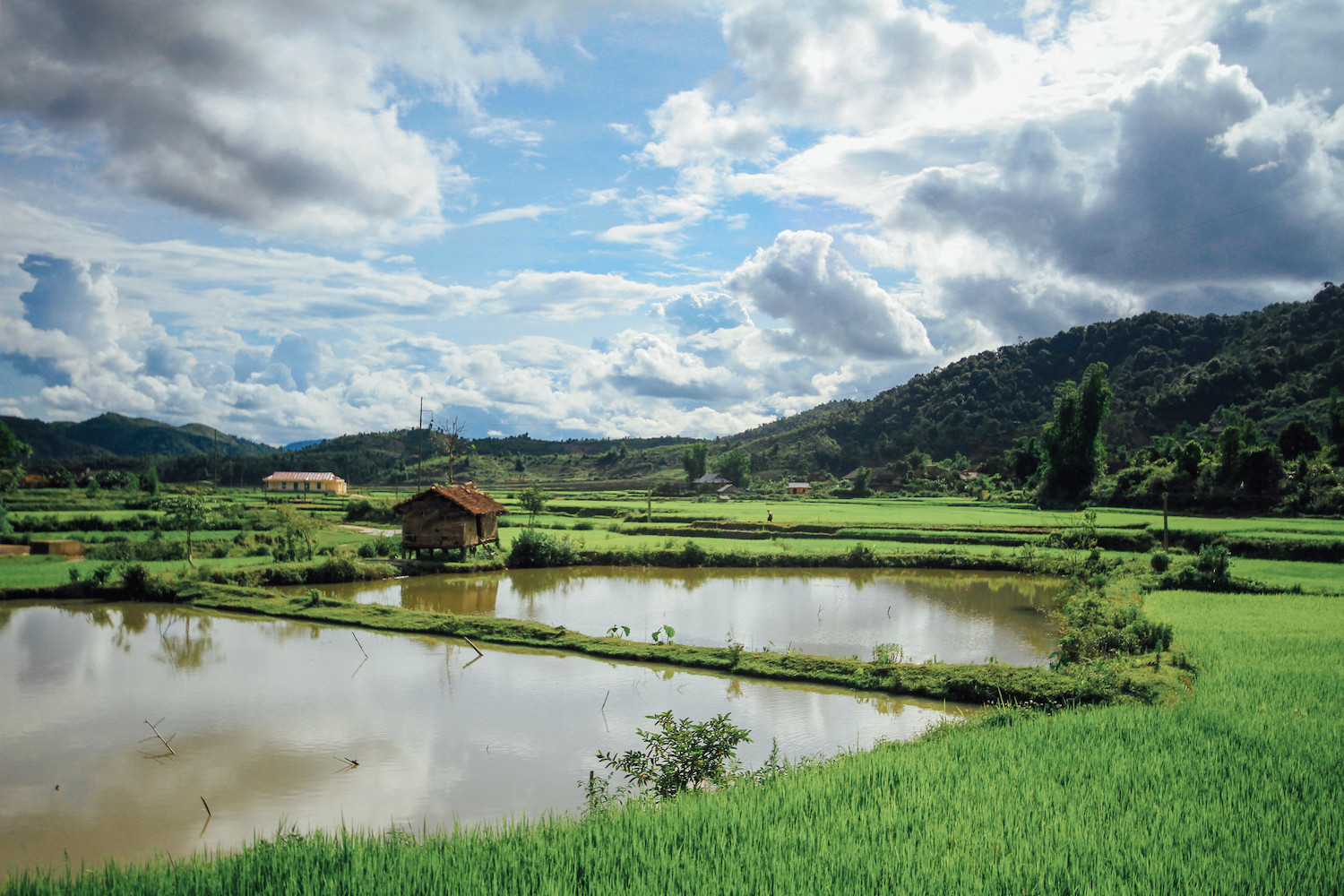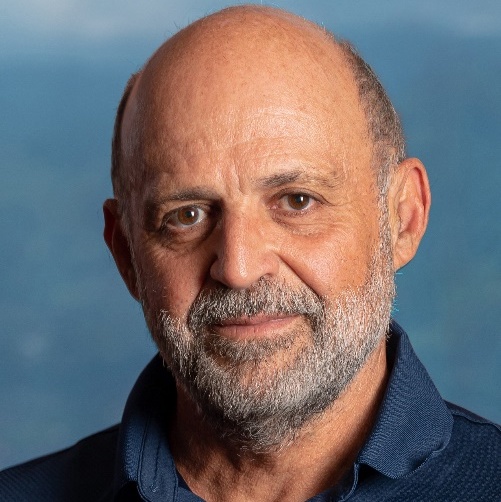
A Vietnamese rice farmer weeds her field by hand. (Image: Bryon Lippincott/Flickr)
Vietnam’s Mekong Delta region has served as the country’s breadbasket for years. Known for fertile soil, the area grows more than half of all rice produced in the country, a staple in the Vietnamese diet. In 2016, however, the delta experienced a devastating drought, leaving 600,000 people without access to fresh water. Rice yields had already been falling for seasons, but the drought represented a tipping point for many farming families. Degraded land, lack of water and pollution caused nearly 1.1 million people to migrate from the region.
Climate change threatens rice cultivation worldwide
Unfortunately, this is only the beginning of what’s to come worldwide. Climate-induced crises are threatening farmers’ livelihoods and exacerbating global hunger. Approximately 3.5 billion people rely on rice as a staple in their diet, and the grain provides around a third of the calories consumed in low- and middle-income countries. Rice is also becoming increasingly popular in the West, now commonly found in pet food, beer, cereals and other items to meet the rising demand for gluten-free products.
All of this is impacted by the exponential growth in the global population, and with it, the demand for rice. Rice production will need to increase by an estimated 25 percent by 2050 in order to meet global needs. Meanwhile, approximately 15 million to 20 million hectares of land may suffer water scarcity due to rising temperatures, threatening to greatly reduce the yields and nutritional value of rice harvests.
Increased water scarcity events would be devastating for rice cultivation, as the crop is extremely water-intensive, each kilogram requiring between 2,000 and 5,000 liters of water (40 percent of the world’s total irrigation water). Rice paddy fields and reservoirs have caused a 233 percent increase in manmade wetlands while natural wetlands have declined by 35 percent, throwing everything out of balance.
Rice is also a significant contributor to global greenhouse gas (GHG) emissions. In fact, rice’s carbon footprint is similar to the international aviation industry. Emissions are largely caused by the conventional field flooding farming method, which prevents oxygen from penetrating the soil and leads to the growth of harmful, methane-emitting bacteria. Additional methane is released from the rotting rice straw left over from the crop in conventional rice farming.

There is a better way, but the private sector needs to invest in it
If we continue cultivating rice using these methods, climate change-related weather incidents and exhausted resources will certainly cause a shortage, likely leading to a hunger disaster on a global scale.
After years of research, trial and error, there are now proven methods of sustainable rice production that are adaptive and resilient to climate change, and produce the same yields as conventional cultivation. A study in the An Giang province in Vietnam, the world's fifth largest rice producer, compared harvests between farmers using the more sustainable wetting-and-drying (AWD) field method to those using the conventional field flooding approach. Yields were almost identical, and the AWD method emitted less greenhouse gases and required fewer seeds and fertilizer.
These green farming techniques are the only pathway that can maintain rice productivity and adapt to rising global temperatures. But more private-sector finance is needed to support and grow these programs. Fortunately, it is no longer a risk for companies to shift to these sustainable methods. In fact, it’s a business imperative.
At the Global Environment Facility, investments totaling over $600 million continue to grow from the initial cluster of Asian countries and into West Africa under our programs — demonstrating scalability, replicability and financial support from the private sector, which is a vitally needed element for equitably transforming systems.

Why invest in sustainable rice?
Here are some of the top reasons why the time is now to invest in sustainable rice.
Reducing GHG emissions. There are now proven methods to mitigate rice’s methane emissions by up to 70 percent using simple changes in farming techniques. These modifications include removing rice straw from the fields after harvest, new fertilization and soil amendment regimes, and careful control of the timing, duration and extent of rice field flooding. These transitions are possible through the training and support of rice farmers at the ground level.
Blended-finance to de-risk investments. There is growing attention on blended finance opportunities to de-risk private-sector investment. Instead of pure grants, which are always in short supply, these investment tools catalyze private-sector investment and foster replicable projects. By combining private and public finance sources — such as commercial investors, donors, and/or multi-lateral trust funds like the Global Environment Facility — project design teams can deploy credit lines, loan guarantees, equity investments and other innovative approaches. Many investments can be aggregated into a larger facility or funding program to help scale and attract private finance in markets where the risks are too high for conventional financial products or local institutions alone.
Climate resilience. Researchers have discovered effective methods of reducing rice’s reliance on water that are significantly more efficient than conventional farming techniques, creating more climate resilience. For example, a sustainable rice program in Vietnam used a micro-irrigation system that allows water to drip slowly to plant roots instead of the conventional field flooding method. This resulted in water savings of 60 percent to 70 percent and highlighted the power of technical farming assistance to reduce resource exhaustion and provide more consistent yields.
A global network of support. Sustainable rice farming programs are backed by a network of international organizations including the United Nations, the World Business Council for Sustainable Development, and my organization, the Global Environment Facility. Programs such as the Sustainable Rice Landscape Initiative are well underway to help private companies make the shift from conventional rice farming to green techniques in order to meet the Paris Agreement’s GHG emission targets. The Sustainable Rice Platform helps create customized finance approaches and climate transition blueprints.
Small farmers are ready. Training and capacity-building for farmers and smallholders have been underway for several years now, paving the way for a systemic transition to sustainable rice production and providing additional assurance for private investors who were reluctant to invest in a country that is too early in this process. Support for farmers can take many forms, such as teaching mechanized harvesting methods in Nigeria, which prevented almost half a ton of food loss and increased farmer profits by approximately $200 per hectare.
The time is now for the private sector to invest in sustainable rice production — not only to meet global climate policy requirements, but also to ensure that rice farming is able to adapt to our changing planet and that businesses remain profitable. Conventional rice farming methods are a ticking time bomb. The foundation has been laid in terms of developing proven techniques, working with governments to shift national policies, and training farmers around the world. It’s time for CEOs to take the leap, not only to save their businesses, but also to prevent climate and hunger disasters.

Carlos Manuel Rodriguez was selected as CEO and Chairperson of the Global Environment Facility in June 2020. Rodriguez, a Costa Rican national, was a pioneer in the development of Payment for Ecosystem Services and strategies for forest restoration, ocean conservation, and decarbonization. During his three terms as Environment and Energy Minister, Costa Rica doubled the size of its forests, made its electric sector fully renewable, and consolidated a national park system that has made the Central American country a prime ecotourism destination.
Rodriguez has also founded and served on the board of several environmental NGOs and tropical research institutes. After his second tenure as minister, he was Vice President for Global Policy at Conservation International for 12 years.













